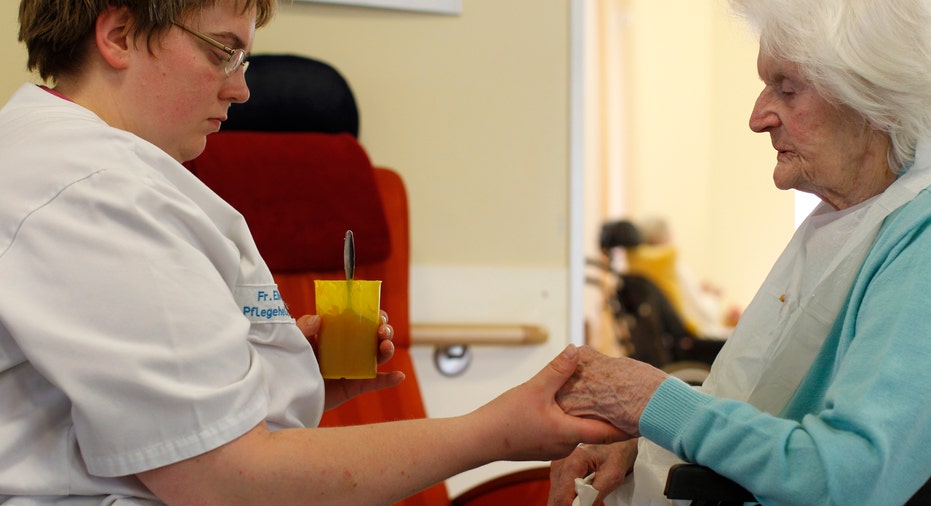How to Evaluate Long-Term Care Facilities

Making the decision to move a loved one to a long-term care facility is never easy.
However, once the decision has been made, another challenge awaits: finding the right facility, and figuring out how to finance the care.
Many baby boomers report having a hard time evaluating and identifying appropriate long-term care facilities for aging family members. But boomers are in a unique position during this search since they know it won’t be long until they too, might be in need of long-term care.
The latest survey from Anderson Robbins Research, fielded on behalf of Ecolab, of Americans older than 40 who have been involved in considering or selecting senior living housing for themselves or someone they know recently, shows boomers have high standards for their prospective facilities, seeking clean, safe and healthy communities.
I had a chance to speak to Leah Larson, director of long-term care marketing for Ecolab’s Institutional business, to discuss the findings and what questions boomers need to ask when assessing long-term care facilities. Here is what she had to say:
Boomer: With many seniors focused on living a vibrant life, what are some of the expectations of amenities and services they want from communities?
Larson: What our research indicates is that one size does not fit all when it comes to selecting a senior living community. Answers about what factors are important or expectations for services and amenities varied depending upon whether the respondent was making the decision for themselves or a loved one.
For residents, comfortable living spaces ranked No.1, followed by services and amenities and then a safe layout of their apartment or room. Loved ones ranked a caring staff at the top of their list.
Regardless of the role of the respondent, when asked about the importance of services and amenities, the “extras” really mattered. Many (82%) said frequency of cleaning/laundry services is a priority, along with in-house exercise and recreational activities (72%) and access to in-room WiFi (43%). Other expectations include food and dining options reminiscent of a hotel, such as in-room delivery, a coffee shop, bakery/fresh baked goods and a fresh salad bar. About 20%expect access to an on-site bar or pub.
Boomer: The survey showed ensuring the cleanliness of the community as paramount when evaluating different facilities. What should boomers look for when visiting communities to ensure cleanliness?
Larson: This research confirmed what we intuitively know to be true. First impressions count, especially when it comes to cleanliness. Nearly all of the respondents (93%) said cleanliness of the community is an important factor in the decision-making process. Women are twice as likely as men to say cleanliness is their top priority.
The community’s overall appearance can serve as an indicator of how well it is managed and maintained. Is the décor attractive and home like? Is the community free of odors, and appropriately heated/cooled? Are there visibly soiled walls, carpeting and furniture? The answers to these questions can help determine if cleanliness is a priority for management and staff.
And, while overall appearance matters, it’s impossible to see disinfection. So, it’s best to ask the staff questions. How frequently are housekeeping services provided? What protocols and training are in place to ensure housekeepers maintain high standards for both cleaning and disinfection? These questions are important as 62% of all confirmed Norovirus outbreaks occur in senior living communities.
Finally, we recommend observing whether caretakers wash or sanitize their hands between rooms. Proper hand hygiene is an indication of the community’s cleanliness standards, as the cycle of infection can start when dirty hands touch people or previously disinfected surfaces.
Boomer: Along with cleanliness, safety is a top concern when considering a senior living community. What should we look for in areas of safety?
Larson: While there are many factors of safety in a senior living community, the areas that Ecolab focuses on are infection prevention and food safety.
Concerning infection prevention, we recommend asking questions about housekeeping protocols, training, frequency, products used and inspections. Effective cleaning and sanitizing are extremely important in a senior living community due to potentially-compromised immune systems. If a space isn’t clean, it isn’t safe.
Related to food safety, we know that once contracted, foodborne illness is six times more likely to prove fatal for someone 65+ as compared to adults aged 20-59. For this reason, have a conversation with the chef or food and beverage director to ask about the community’s safe food practices, as well as training and procedures for kitchen cleanliness and sanitation.
Boomer: What should we look for with regards to the quality of food and dining options?
Larson: What our survey showed is that senior living communities today are expected to offer fresh, healthy foods along with convenience. In fact, 85% of respondents ranked quality and variety of food as important. More than half expect to have vegan or vegetarian items, while 43% want gluten-free options.
Boomer: How do baby boomers envision themselves as recipients of long-term care in the future?
Larson: According to our research, most (66%) baby boomers said they would likely consider a senior living community for themselves in the future. Interestingly, they expect to do so when they need assistance, rather than choosing to move into a place that enables independent living without the burdens of everyday tasks.
This implies that senior living communities need to find ways to differentiate independent and assisted living from nursing care, and increase awareness about the opportunity to maintain a vibrant lifestyle in post-retirement years.



















